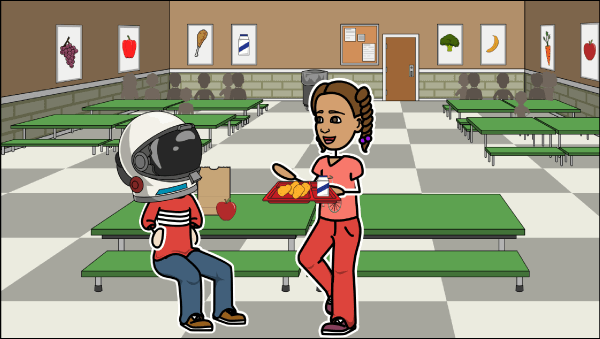

Wonder, by R.J. Palacio, is a touching tale about a fifth-grade boy, August Pullman (“Auggie”), who was born with a rare facial difference called mandibulofacial dysostosis, or Treacher Collins syndrome. This genetic disorder affects the growth and appearance of Auggie’s cheekbones, jaw, chin, eyelids, and ears. He endured countless painful surgeries throughout his childhood, and, as a result, Auggie was not able to attend public school until fifth grade.
Though he is intelligent and has been homeschooled, Auggie has no idea what it is like to be in school with other children. His only experiences with people, besides his family and a few others, have been in hospitals or when people gawked at him in public. Storyboard That’s Wonder teaching guide provides many activities that are sure to engage students. Enjoy the Wonder teaching resources and the Wonder lesson plans below with this Wonder book school of storyboarding.
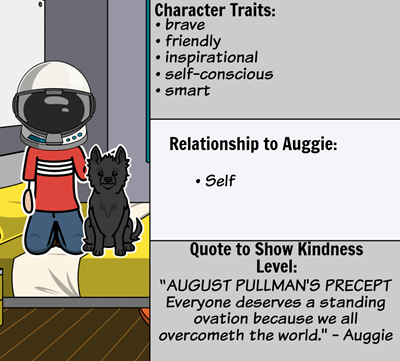
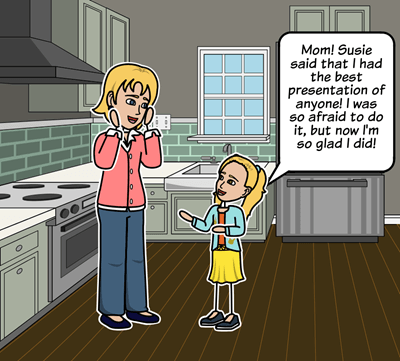
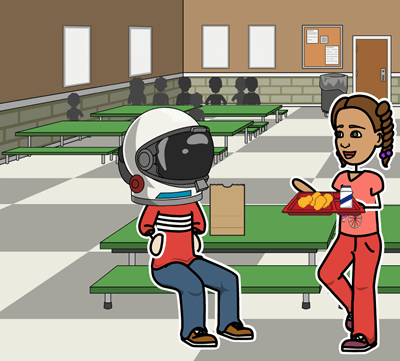

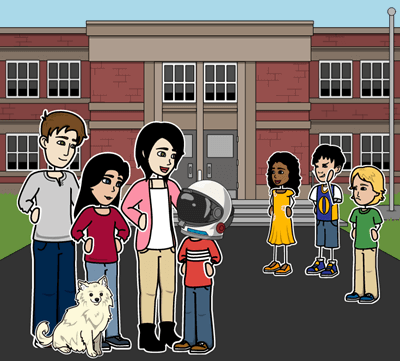

 Different Points of View in Wonder by R. J. Palacio" width="400" height="361" />
Different Points of View in Wonder by R. J. Palacio" width="400" height="361" />



Wonder lesson plans can be set around many different things. You can focus on the theme of kindness, family, friendship, belonging, acceptance, and so many more. Getting students to understand the underlying messages throughout the story will have them think beyond the text and see how it applies to their lives.
You can use these Wonder lesson plans to supplement your reading of the book or as standalone lessons. Here are some possible Wonder lesson plan ideas:
Wonder by RJ Palacio, is about a boy, August Pullman, or “Auggie”, who faces bullying and misunderstanding on a regular basis, due to a disfiguring genetic condition. The first part of the book is from Auggie’s perspective and describes his transition from homeschooling to a private school.
Except for his appearance, which people find disturbing or upsetting, Auggie thinks of himself as a normal kid. He has been homeschooled for many years, due to this medical issue and related surgeries, but his mother feels he should start middle school with other children.
Auggie is terrified of going to a “real school”, but has always wanted to experience friendships the way other kids did. He admits to having a few friends, but nothing like “normal” kids experience. After a bit of back and forth with his parents, Auggie agrees to at least meet the head of his new school.
When he goes for a tour, he is introduced to three students: Jack, Julian, and Charlotte. Though Jack and Charlotte are slightly uncomfortable, they handle themselves well and manage to be nice and helpful to Auggie. Julian starts off mean and continues with nasty, under-handed remarks, even after school is in session.
Readers are introduced to Mr. Brown, one of Auggie’s teachers. He teaches the kids about precepts: ”PRECEPTS = RULES ABOUT REALLY IMPORTANT THINGS!” They are mottos to live by, according to Mr. Brown. The first precept of the year (and a theme of the book) is, “WHEN GIVEN THE CHOICE BETWEEN BEING RIGHT OR BEING KIND, CHOOSE KIND.”
At lunch, Auggie meets a new friend, Summer, who sits with him. He also hangs out with Jack a lot. He works hard in school and experiences many happy firsts, all while feeling that people are judging him. While most of his time is happy, Auggie has one particularly painful experience on Halloween. When Auggie changes his costume at the last minute, the other students don’t realize it is him. Auggie overhears Jack, who was egged on by Julian, saying that he would kill himself if he had a face like Auggie’s. Auggie is so upset, he has to go home sick.
The second section of the book is from the point of view of Via, Auggie’s older sister. She loves her brother very much, but doesn’t remember a time when August wasn’t the center of attention. She says this is okay, but it becomes clear Via does need to have some attention given to her. She has always been Auggie’s “protector”, even when confused by the complex circumstances of her family’s life, and despite not understanding how Auggie deals with people’s stares and comments.
The remaining chapters show readers how some of the other characters perceive Auggie. They capture the different feelings and emotions children experience when interacting with people who are different. These chapters portray many perspectives on bullying and dealing with bullying.
Check out our Wonder lesson plans and activities above for students to dive deep into Auggie's world and get the most out of this beloved book. Activities include storyboard ideas for creating a Wonder summary, analyze themes, and even take the fun offline with printable worksheets!
Who is the main character in Wonder?
The main character in Wonder is August Pullman, or “Auggie.” He was born with a rare facial difference.
Why is it important to “choose kind”?
It is crucial to “choose kind” because it can have a profound impact on the lives of others. When we are kind to others, we show them that we care about them and value their feelings and experiences. When we are kind, we also set an example for others.
How does the way we treat people affect them throughout their lives?
The way we treat people affects them throughout their lives in many ways. When we are kind to others, it can boost their self-esteem and confidence. It can also make them feel valued and appreciated.
How do the parallel stories help the reader understand the plot events better?
The parallel stories help the reader understand the plot events better because they provide different perspectives on the same event. For example, when Julian bullies Auggie, we see the event from both Auggie’s and Julian’s perspectives. It helps us to understand why Julian behaves the way he does and how it affects Auggie.
How does our time in school affect our lives outside of school?
Our time in school affects our lives outside of school in many ways. For example, the friends we make in school can become lifelong friends. The experiences we have in school can also shape our future goals and aspirations.
How do Mr. Brown’s precepts relate to the theme of the novel?
The precepts that Mr. Brown teaches his students relate to the novel’s theme because they emphasize the importance of being kind to others. Mr. Brown’s precepts also teach us that we should not judge others based on their appearance.
Do you think Wonder is ultimately a hopeful or pessimistic book? Why?
Wonder is ultimately a hopeful book because it shows how the characters grow and change throughout the novel. They learn to accept each other for who they are and also the importance of being kind. This growth and change ultimately lead to a more positive outlook on life.
What are some examples of symbolism used by the author in the novel Wonder, and how does the symbolism help you better understand the characters and their motivations?
Some examples of symbolism used by the author in Wonder include Auggie’s superhero cape and the “Wonder” play. The cape symbolizes Auggie’s strength and courage, while the “Wonder” play symbolizes how everyone has value and is worth fighting for. These symbols help us to understand the characters’ motivations and how they view themselves and others.
Begin by discussing essential questions related to the themes and characters in Wonder. Encourage students to think about the importance of kindness, the impact of our actions on others, the perspectives of different characters, and the influence of school on our lives.
Utilize a variety of Wonder activities to enhance students' understanding of the book. These activities include creating character maps, illustrating Mr. Brown's precepts, exploring themes through examples from the story, mapping out the plot using a diagram, analyzing symbolism, and practicing point of view by redrawing scenes from different characters' perspectives. Choose activities that align with your objectives and encourage creativity and critical thinking.
Consider using Wonder lesson plans to deepen students' engagement with the book. You can focus on themes such as kindness, family, friendship, belonging, and acceptance. Some lesson plan ideas include interviewing someone different from them, researching Treacher Collins syndrome, brainstorming acts of kindness and reflecting on personal experiences, and writing letters from Auggie's perspective at different points in the story. These lesson plans provide opportunities for students to apply the book's messages to their own lives.
Encourage further exploration of Wonder by offering extension activities. Students can create storyboards for a sequel or chapters, draw pictures of characters, design worksheets for classmates, and discuss thought-provoking questions about the book. These activities foster creativity, comprehension, and critical thinking.
Engage students in discussions about the main character, the importance of choosing kindness, the impact of our actions, and the parallel stories in the book. Encourage students to reflect on their own experiences and connect them to the themes and messages in Wonder.
The main characters are August Pullman, or “Auggie,” and his family and friends. Auggie faces many challenges throughout the novel, including discrimination and bullying. His family and friends also face challenges, such as how to support Auggie while also dealing with their own fears and prejudices.
Some themes present in Wonder include acceptance, kindness, and family. These themes are explored through the characters’ experiences with discrimination, bullying, and Auggie’s rare facial difference.
The author’s purpose for writing Wonder is to explore the themes of acceptance, kindness, and family. The author also wants to show readers that everyone has value, regardless of their appearance.
Some lessons we can learn from reading Wonder include the importance of being kind to others and not judging people based on their appearance. We can also learn that everyone has value and is worth fighting for. These lessons can help us to become more accepting and understanding of people.